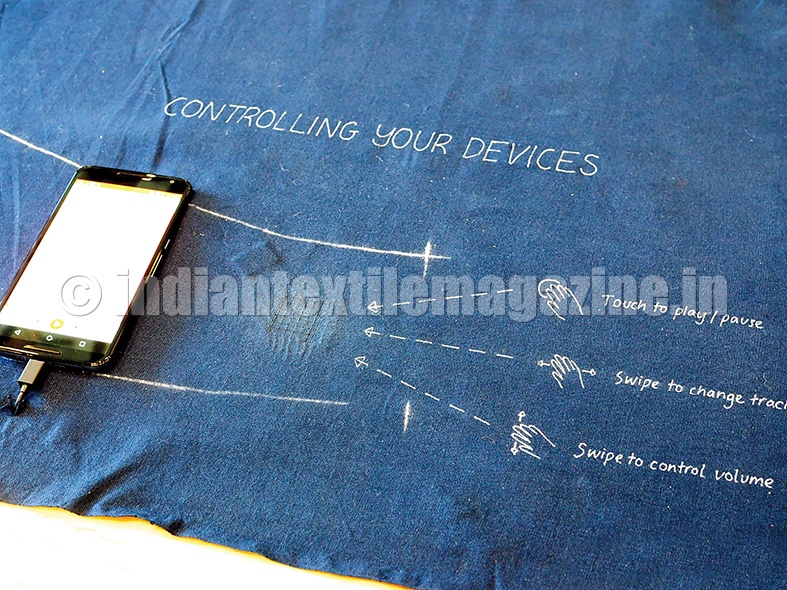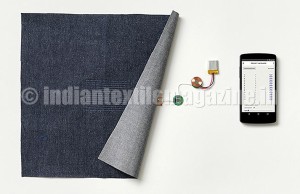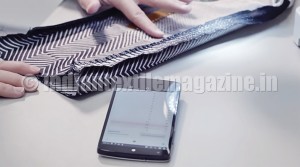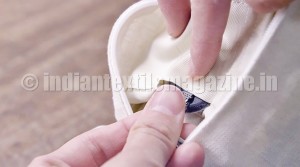Wearable technology to be completely revolutionised
It won’t be a misnomer to say that we are living in age of “smart” technologies. From smart phones to smart televisions to even smart buildings, it is one field that seems to have an all-pervading influence. This being the case, it was only a matter of time before the concept of “smart” caught up with textiles too. Smart textiles and wearable technology though are not exactly recent concepts. A lot of research has been going on in the field, especially over the last decade. Till now though, the concept of smart fabrics has not really caught on. Things, however, are going to change soon. With technology giant Google announcing ‘Project Jacquard’, the concept of smart fabrics has now come into sharp focus.
A brainchild of Google’s Advanced Technology and Progress (ATAP) department, Project Jacquard was announced at the company’s annual conference in San Francisco in May. While it had its eyewear earlier and there are scores of other brands that are offering smart watches, Project Jacquard aims to completely revolutionize wearable technology. Right from shirts to pants, socks, t-shirts, or literally every piece of clothing could become ‘smart’, equipped as they are with touch and gestural interactivity.
As mentioned earlier, a lot of research has been happening in the field of smart textile technology. There have been attempts made in the recent past to embed solar panels into clothing which can charge mobile phones. Similarly, there have been experiments on using LED lighting systems on pieces of clothing.
The most widely reported among these initiatives till now was perhaps Intel’s smart t-shirt project. The chip maker had come out with a smart t-shirt which could track heart rate and other health data.
OMsignal’s biometric smart shirt is another initiative that has been making news. The smart shirt monitors breathing rate heart rate as well as step count. Similarly, the Hexoskin biometric shirt has also been in news in recent times. This piece of garment is capable of measuring heart rate, step count, calories burnt and the breathing rate, among others. Then, of course, you always had the case of smart watches and Google’s very own smart eyewear.
However, in all these cases, the hardware had to be placed in a particular location in the piece of clothing. This is where Project Jacquard differs. Here the company aims to make entire clothing surfaces interactive with the help of what it calls “conductive yarns”. What this essentially means is that there is virtually no limitation when it comes to the placing of the technology. The sensory conductive yarns would be woven along with the other components of the textiles, making it one integrated interactive surface. The conductive yarns would also blend seamlessly with the other types of yarns, which also makes them score on the aesthetics front.
According to the company’s online portal, “Jacquard yarn structures combine thin, metallic alloys with natural and synthetic yarns like cotton, polyester or silk making the yarn strong enough to be woven on any industrial look. Jacquard yarns are indistinguishable from the traditional yarns that are used to produce fabrics today”.
The project envisages connecting the conductive yarns to connectors and tiny circuits, which are very small in size. These small circuits which according to the company would be no larger than a button on a jacket will capture touch interactions and gestures, which would be then wirelessly transmitted to smart mobile phones or other devices in order to control a wide range of functions.
If and when the smart Jacquard fabric is commercially available, it has the potential to completely revolutionize the world of textiles. One of the biggest advantages would be the fact that it can be produced in standard industry looms. Secondly it would give designers a free hand, as they can literally let their imagination run riot. They can bring in new concepts into their designs, without having to worry about getting to learn anything specialized in software or electronics.
Google has already set the ball rolling for commercial mass production of the fabric. It has named Levi’s, the renowned denim wear brand, as its first official partner for the project. Ivan Poupyrey, who is the Technical Product Lead at Google’s ATAP department, has been quoted as stating: “When it came to choosing a first partner for Project Jacquard, the Levi’s brand was a natural fit. Levi’s is an iconic brand with deep Bay Area roots- authentic and also highly innovative and fashionable. Levi’s brings to Jacquard their deep knowledge and understanding of apparel, their consumers and what they value.”
With its undoubted business potential, this is one development whose progress would be among the most keenly watched in the textile industry in the near future.



